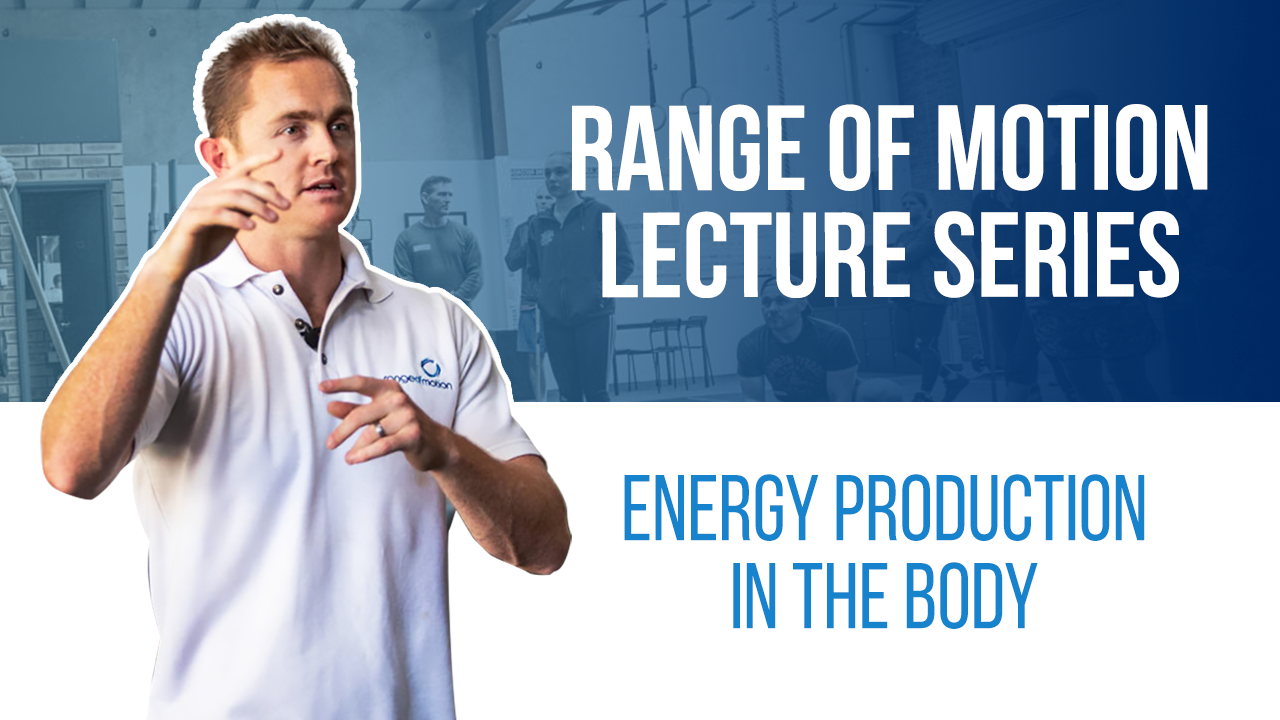Transcribed from video:
– What are we actually trying to do? Well to understand how to train for work capacity, which is basically getting more done in less time. Does that make sense? If you can run 12 kilometres in an hour, you have greater work capacity, than if you could run 12 kilometres, in an hour and 10 minutes, so it’s doing more work in less time. Or same amount of work in less time. Bless you. Or more work in the same amount of time, for example. So, we need to understand what we’re actually trying to do, and we’re trying to create muscle contractions, that’s the cracks of the matter. If we can create contractions of muscles, repeated contractions of muscles, for an extended period of time, we can get more work done in less time. So he priority is about using fuel, to contract muscle fibres, that’s what we’re trying to do. Now to understand how we do this, and to understand the science behind hacking this, so to speak, we need to understand where energy comes from, who is familiar with these terms ATP, ADP, okay, we’re going to go through a pretty basic overviews of this, just so that you can understand the concept, and then we can build on it from there. So, ATP is a Adenosine Triphosphate, the Tri here is the important bit. And, basically, one, two, three, phosphate molecules. It doesn’t matter what phosphate is, for all intents and purposes today, this is just how we generate energy. So you’ve got these three bits of phosphate, whatever that is, and they’re all stuck together. This is called ATP, I’m going to write Tri there because that’s the key bit, ATP Adenosine Triphosphate, Tri, 3 phosphate molecules. Now the way that we produce energy, all energy in the body, is produced when we take one of these phosphates molecules, and we pull it off the other two. Because between these molecules, you have bonds, and those are just the things, that join these circles of phosphate together. So when we pull this guy here away, we end up with, somewhat predictably two and then one over here, that’s now floating around on it’s own. And the act of pulling this away, the act of taking it apart causes a little explosion, and that’s where energy comes from. So when this comes apart, this explodes, and it releases energy. So all energy is, is breaking one of these bonds, in between the phosphate molecules. Does that all make sense? And really that’s everything you need to know, about the physiology of producing energy. You pull that away, it creates energy, we can use that energy to contract muscle fibres, to then do stuff, to do work, to do exercise. So now we’ve got, ADP, Adenosine Diphosphate, Di two, and we’ve got a phosphate molecule, floating around on it’s own. So what we have is, we have all this ATP in the body, you know 3, 3 P’s hanging around, 3 P’s hanging around, all through the body. We then go to exercise, we pull apart, we pull one of those phosphate molecules off, causes an explosion, that explosion releases energy, which allows us to fuel muscles. Now if we keep doing that, to all these ATP, floating around, eventually you’ve got lots of these guys here, the ADP, lots of these guys here, the P, the phosphate on it’s own. And you’ve run out of this stuff, so what energy system training is, is improving our ability to take this phosphate molecule, re-attach it, re-make this bond, to an ADP which then makes it, become, ATP again. Does everyone understand all that stuff. Yeah, is that simple enough there? Basic enough? That’s, that’s all this is about. Taking this guy, pulling one of the bits away, releasing energy and then somehow putting that bit back on, re-attaching these two things, and then we can start the cycle again.
– So is this just replenishing out energy?
– Yes. So this is, this is your fuel tank, this is like putting petrol in the car, when the petrol is, empty, you put more in. That’s basically all we’re talking about here. And it’s this cycle that we go through, so, to create energy, we do this but then our body has to replenish it, it has to re-fuel the fuel tank by re-attaching these, and everything we’re going to talk about in this lecture, is talking about how we train our ability to do this better. Firstly the ways in which we can do this, and then how we can train our ability to do this better, cause you can see, if we can go through this process faster, then we’re going to be able, to create more muscles contractions, do more work in less time, therefore have higher fitness, higher power output, higher work. Okay.





